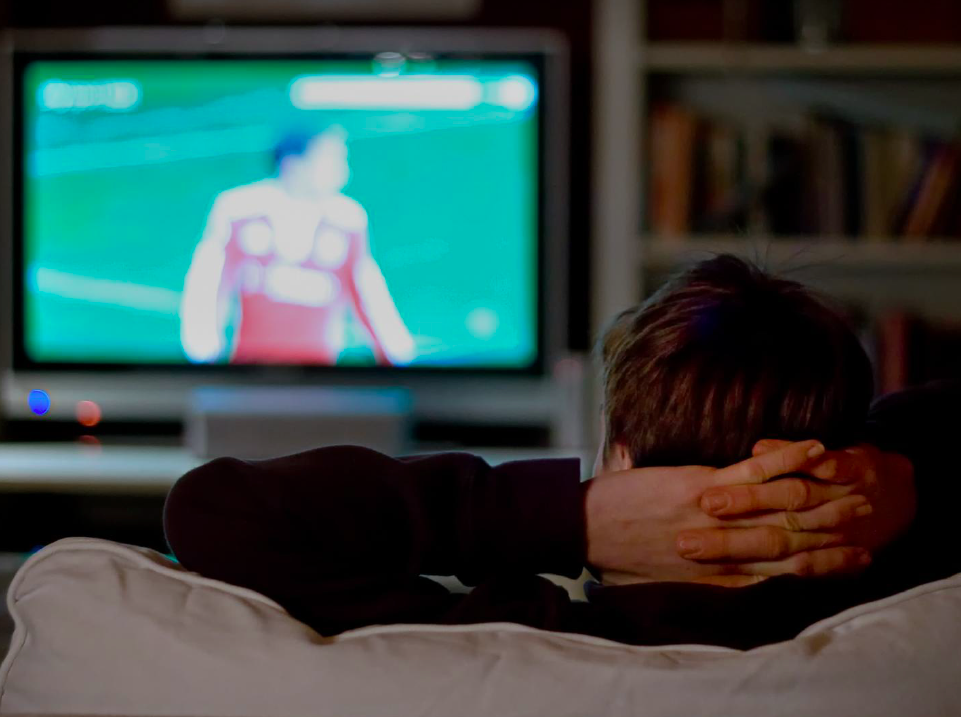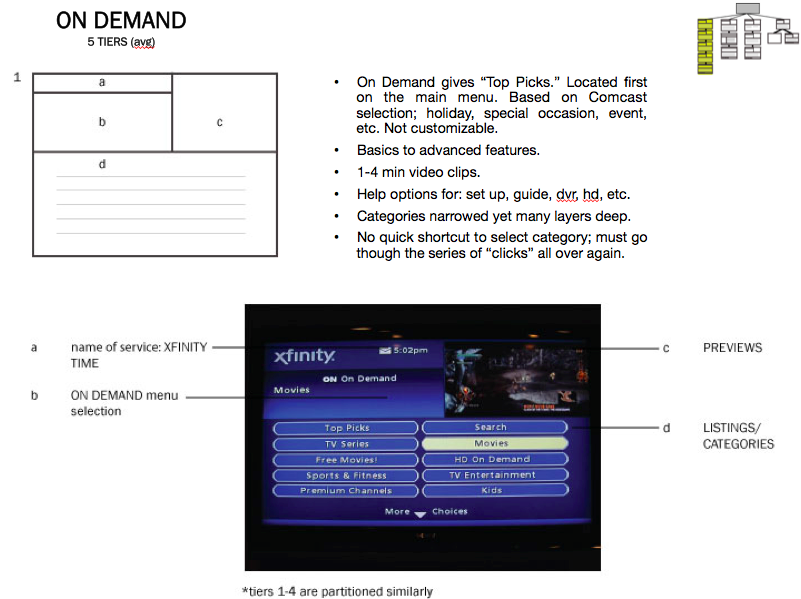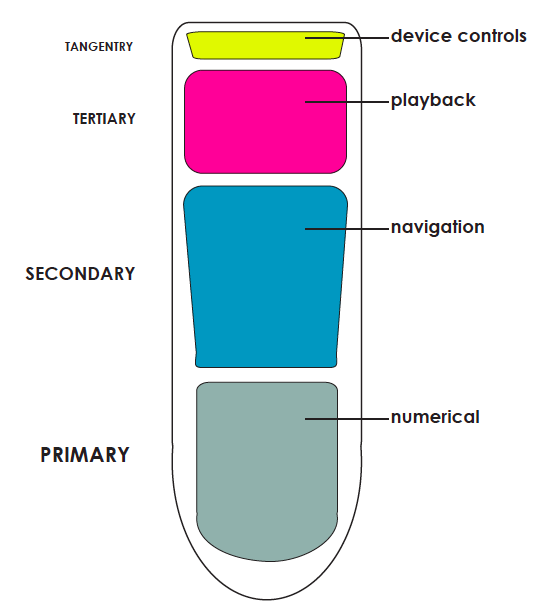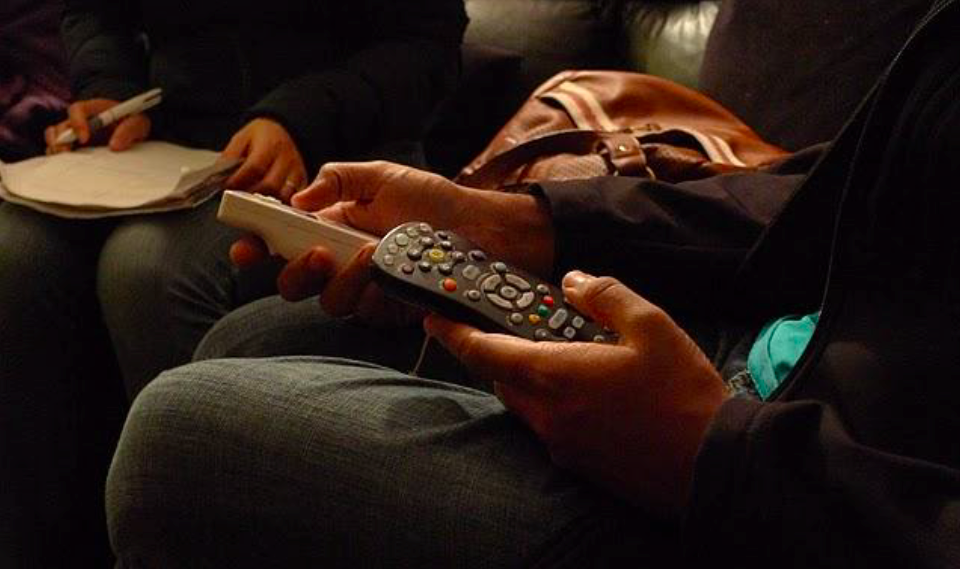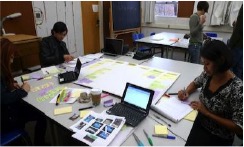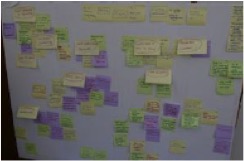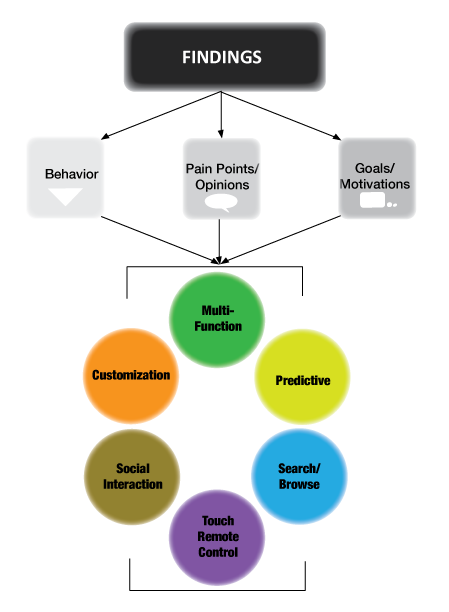Case Study | PSx TV Console
Objective
To identify and refine the interface for a 10-foot UI of a television-watching experience. Fulfill a need where it is weak or vacant in the market.
Discovery Phase
Firstly, existing services were explored to understand what was already being offered in the television market. Comcast/Xfinity was chosen for its popularity and familiarity. A brief information and interface analysis was performed on its main screens and remote control.
Research Methods
Next, contextual inquiries were conducted to understand what services people were using, why they chose them, and how they were using these services in their home. The television watching behavior of 8 subjects were studied with an average of 3 devices and controllers. Multiple devices were used since each console individually was considered incomplete.
Key quotes, observations, and pain points from the inquiries were organized on post-its and clustered based on shared ideas and common patterns. From this we were able extrapolate functions users valued, features that would improve the experience, and attributes of the system users did and did not enjoy. For example, many users commented harshly on their remotes either being too cluttered (Xfinity, AT&T), too minimal (Apple TV, Roku) and the need for an improved keypad.
Findings
Key takeaways from our preliminary research include the appreciation for: predictive technology with user control, multiple accounts within a household, a clean and concise interface, simple text inputting, a reliable search function, and the consolidating of devices/remotes. Also of value was the ability to be more interactive with the system. To share, rate and review directly within the system itself rather than outside the system on another device. Thus, the focus of the design is to create a more tailored experience for the individual, accommodate for multiple users, and have the ability to interact with your network within and outside of the household. A touchscreen remote was also included since the interaction and interface is very familiar with our demographic.
Structuring the findings
Personas were created to structure these early findings and improve on our conceptual model. A storyboard was created to capture one of the personas within the frame of a household. Our system’s aim was to be a complete family entertainment device that solved the problem of watching TV both individually and together.
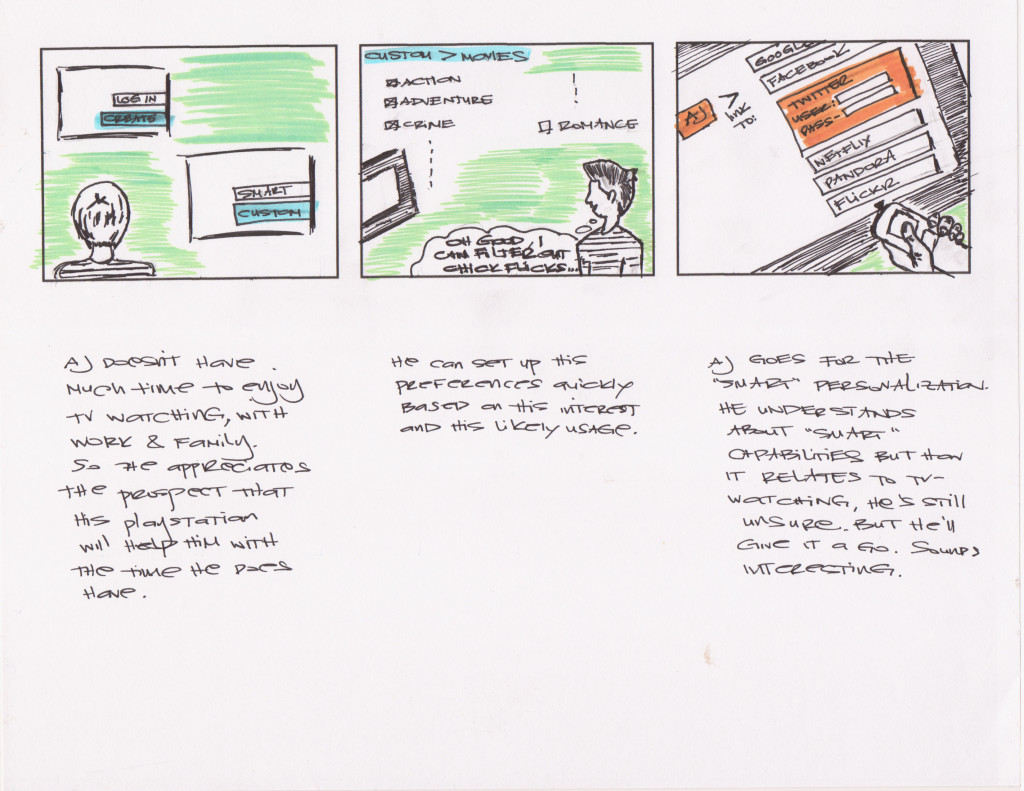
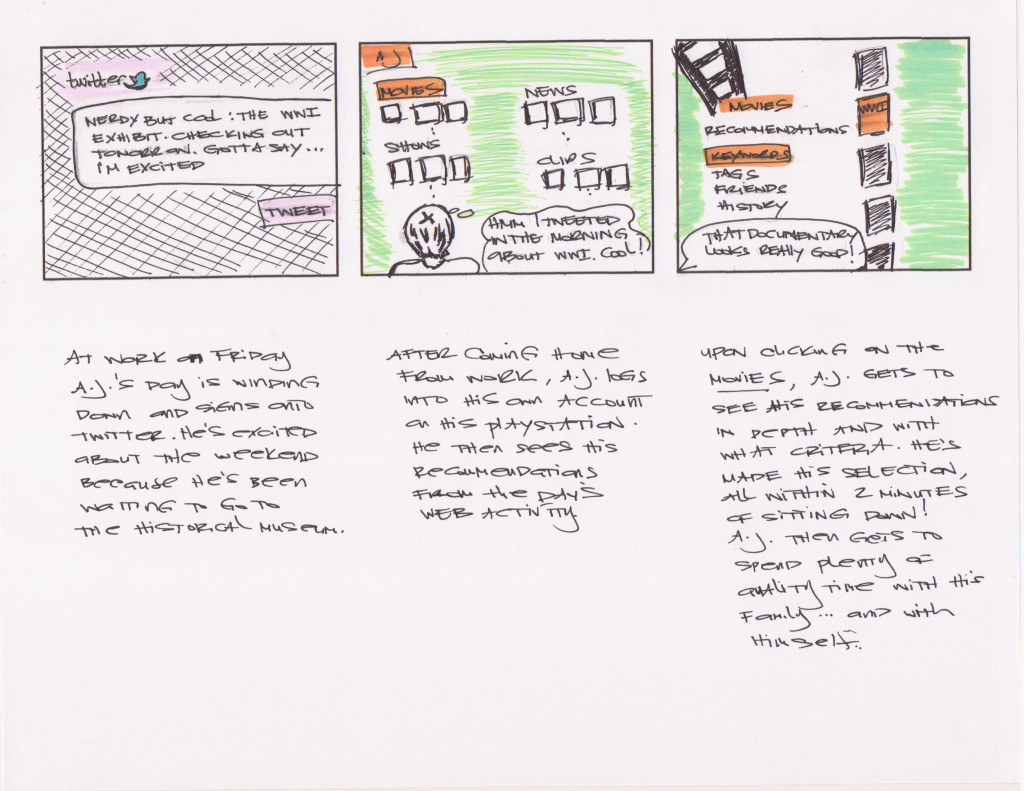
DESIGN PHASE
An extension to the task was to build on an existing service and apply their business model, specifically the Sony Playstation. Known mainly as a gaming console the Playstation has grown to become a content viewing device with its own media store. After merging their content strategy with our system’s main functions we then assigned each team member a set of features to expand and explore. Thus, each team member had the responsibility for designing their own user flow on the TV and the remote.
Early Design
The early design phase proved rather challenging since there were dual interfaces and a dual set of interactions to account for, where the process flow would jump from one to the other. The interaction model then poses the question: where does the main interaction lie, the UI of the TV or the remote?
After a series of revisions to our design and refinement to our task flows the team and I decided to separate the type of information displayed on each of the UIs. Actions displayed on the TV UI were to be navigation-based while activity on the remote UI were to require executable-actions, like playing a media file, entering a password, or sharing to another household account. Thus, the TV UI focused more on the calls-to-action while the remote UI would perform those actions.

User Testing
Once the interfaces and interactions were complete we were ready to test out our design concepts. A low-fidelity prototype was constructed with paper mockups to represent each new screen along the task path. Each participant was asked to complete 4 tasks that were fundamental to the system: (1)Set up account and preferences (2)Find a movie and save it for later (3) Find a movie, “like” it, and share it with another household member and (4) Switch between household member accounts. I acted as both moderator and recorder for each test session.

Final Products
The behavioral observations and interview responses collected helped to guide the revisionsM to the initial design. Reactions to the newly included features were favorable. The key improvements made to the final design included: making setup simpler with a finger swiped passcode, dashboard layout changes to differentiate saved playlist verses recommended programs, and a longer remote to provide for more real estate and thus more touchscreen activity.
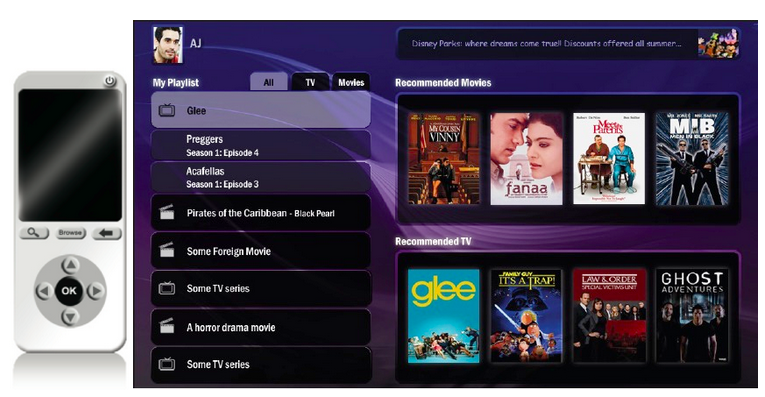
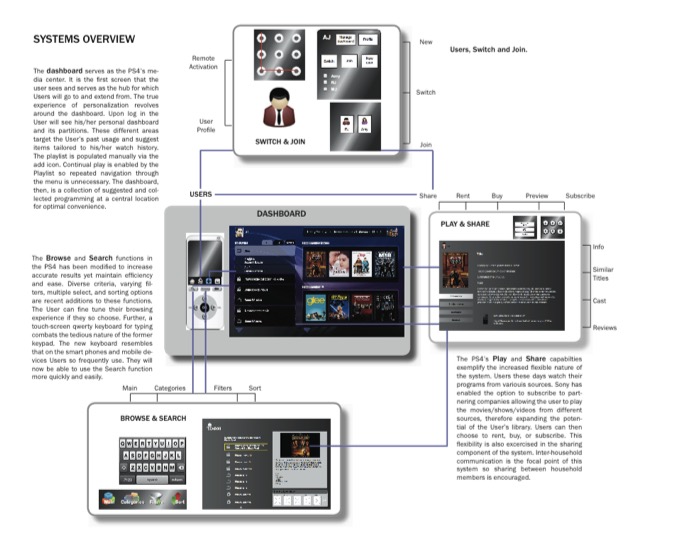
What I did:
- Interface analysis
- Contextual inquiries
- Use pattern, user behavior & motivations
- Storyboard scenario
- Search & Browse screen states for console & remote
- Low and High-fidelity prototype
- User testing
- Annotated wireframes
- System summary
What the team did:
- Comparative Analysis
- Discovery report
- Various screen states for console and remote
- Task Flows
- Site Map
- Visual Design
- Physical remote
What I learned:
- The designer must design for the interaction as much as the interface. It must be logically clear as to where the interaction is needed, particularly with multiple interfaces. Thus, the design of the interface is needed to steer the course of the action.
- Strive for a fine balance between user control verses system design. The system must provide users a sense of choice yet provide purposeful feature capabilities to provide the user the idea of options.
- Plan and capture a strong story to carve out the best path for the design phase
- Collect as much information as possible, even the seemingly insignificant ones. Then find creative ways in logically grouping together otherwise separate ideas to build a cohesive thought.
